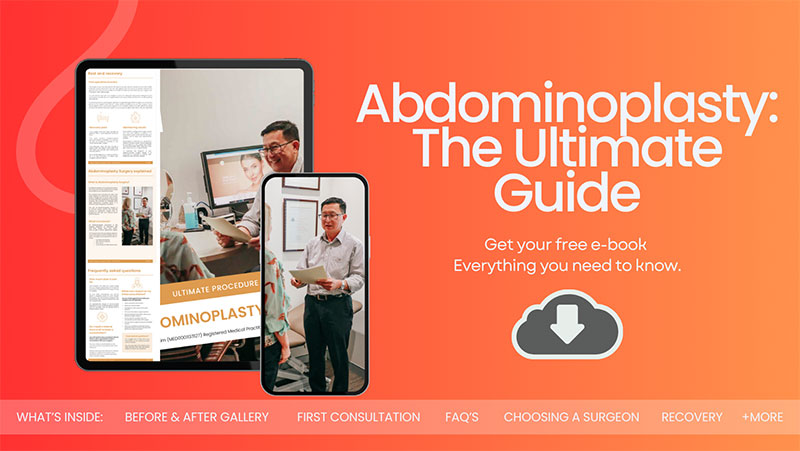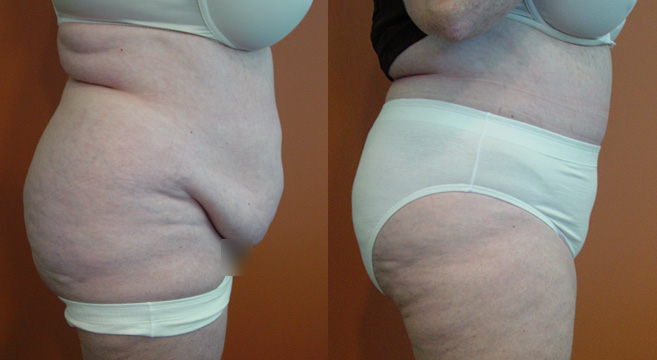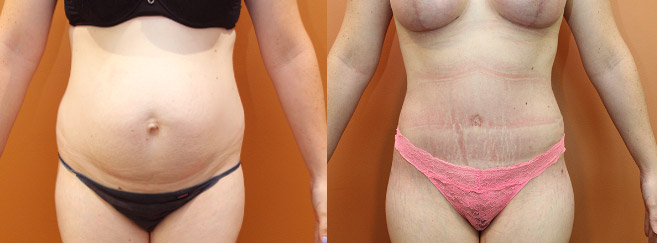Best Practices and Timeline after Abdominoplasty
Abdominoplasty, more commonly known as a tummy tuck, is a surgical procedure that has gained much popularity over the years. It’s an operation that helps patients enhance their abdominal profile by removing excess skin and fat and tightening the muscles in the abdominal wall. However, abdominoplasty is a significant surgical intervention that requires a comprehensive understanding of the recovery process. It’s not a decision to be taken lightly. The post-operative journey can be just as important as the surgery itself in terms of the outcome and the patient’s overall experience. Understanding the healing timeline, best practices for optimal recovery, and special considerations can help set realistic expectations and improve patient satisfaction.
Dr Lim’s 2024 Abdominoplasty Guide

Dr Jake Lim is one of the highly respected and well-regarded plastic surgeons based in Sydney, Australia. With years of experience and training in the field, Dr Lim’s surgical skills extend to a wide range of body procedures, one of the most prominent being abdominoplasty. Recognising the potential of this procedure, Dr Lim employs different surgical techniques when performing this procedure.

What Is Abdominoplasty?
When discussing abdominoplasty, it’s essential to appreciate the complexities of the surgery. It involves two primary actions: removal of excess skin and fat, and tightening of the abdominal wall muscles. The surgery starts with an incision made from hip bone to hip bone, from where Dr Lim can access the abdominal muscles. The skin is then lifted, and the underlying muscles are tightened to create a firmer abdominal wall and a narrower waist. Excess skin and fat are removed, and the remaining skin is then pulled down, trimmed, and stitched in place.
Abdominoplasty is not a one-size-fits-all procedure. It’s highly personalised, catering to individual needs and goals. It can range from a complete tummy tuck – abdominoplasty—where incisions are made across the hip line and around the belly button—to a mini abdominoplasty, which involves a smaller incision and may often be combined with liposuction.
The reasons people opt for abdominoplasty are diverse. Some women choose this procedure post-pregnancy to tighten muscles that have become separated and weakened—a condition known as diastasis recti. Significant weight loss is another common reason, as the rapid loss can leave behind excess skin that doesn’t shrink back.
Abdominoplasty Recovery Timeline
Recovering from abdominoplasty is a process that requires patience and adherence to post-operative care instructions. Although every individual’s recovery is unique, there’s a general timeline that most patients follow.
The immediate post-surgery recovery phase (Day 1 to Week 1) is often characterised by discomfort, swelling, and bruising. Pain is managed with medication prescribed by Dr Lim. A compression garment is provided to minimise swelling and support your new abdominal contour. Drainage tubes are placed at the surgical site to drain any excess blood or fluid.
The short-term recovery phase (Week 2 to Week 6) generally sees a significant reduction in swelling and discomfort. However, patients should continue to avoid strenuous activities, heavy lifting, and any movement that puts stress on the healing incisions. This period also marks the gradual transition from dependence on pain medications to managing discomfort with over-the-counter analgesics.
The long-term recovery phase (Week 7 onwards) is a time of significant improvement. Most patients can resume their normal activities, although high-intensity exercises should still be introduced gradually. During this phase, while the visible changes to your abdomen are apparent, internal healing is ongoing, and it’s crucial to maintain healthy habits to support this process. Complete scar maturation and settling of the abdominal contour can take up to a year or more.
Best Practices for Optimal Recovery
Managing recovery effectively is the key to a satisfying abdominoplasty outcome. This involves various aspects, from pain management to wound care, nutrition, and physical activity.
Effective pain management primarily involves the use of prescribed medications. It’s crucial to take these as instructed by Dr Lim to ensure your comfort in the early recovery phase. Over time, as the healing progresses, the need for these medications will decrease. Always consult with Dr Lim before making any changes to your medication regimen.
Dressing care and hygiene are critical to prevent infection and support healing. You’ll likely have dressings over your incisions and possibly drainage tubes in place. Follow your plastic surgeon’s instructions carefully regarding dressing changes, the cleaning of the surgical area, and when you can start showering.
Nutrition plays a key role in recovery. A balanced diet rich in protein can promote wound healing. Including fruits and vegetables provides essential vitamins and antioxidants that also aid recovery. Stay well-hydrated, limiting your intake of caffeine and alcohol, which can dehydrate the body.
Adequate rest and a good night’s sleep are integral to the healing process. Positioning can impact comfort levels and swelling; typically, keeping the upper body slightly elevated and knees slightly bent can help. Use pillows to support this position and aid comfort. A recliner can also be helpful.
Physical activity post-surgery should be reintroduced gradually. While light walking can usually be started a few days post-surgery to promote circulation, more vigorous activities should be avoided for at least six weeks, depending on your surgeon’s advice. Overdoing it can lead to complications and a longer recovery period.
Regular follow-up appointments are essential to monitor your recovery progress. These visits provide an opportunity for Dr Lim to check the healing of your incisions, ensure there’s no sign of complications, and answer any questions you might have. They are a crucial part of the recovery journey and shouldn’t be skipped.

Special Considerations after Abdominoplasty
Certain aspects of recovery may be unique to abdominoplasty and may not be obvious to patients pre-surgery. For instance, after abdominoplasty, coughing, and sneezing can cause discomfort due to the strain it places on your healing abdomen. However, these reflexes are natural and sometimes unavoidable. A useful tip is to hold a pillow against your stomach to provide some support and lessen the discomfort when you feel a sneeze or cough coming on.
Another consideration is your sleeping and resting positions. In the early recovery stages, laying flat might increase tension on your incision and exacerbate swelling. As such, it is recommended to rest and sleep in a “reclined” position – perhaps propped up on pillows or in a recliner chair. By the end of week 3, many patients feel comfortable enough to start laying flat, but this can vary widely based on individual healing progress. It’s crucial to listen to your body and follow Dr Lim’s specific advice.
Abdominoplasty is a major surgery, and like all surgeries, it carries the risk of complications. Therefore, knowing what to watch out for is essential. Increased pain, fever, sudden swelling or redness, pus from the incision site, or unusual changes in the appearance of your abdomen could signify a problem, such as an infection or a seroma (a pocket of clear serous fluid that sometimes develops in the body after surgery). If you observe any such signs, it’s important to contact Dr Lim’s team immediately to rule out or manage any complications.
Getting Back to Normal Life after Abdominoplasty
Recovering from abdominoplasty isn’t just about physical healing; it’s also about returning to your normal daily routines and activities. This should be a gradual process. Over time, as your strength and energy levels improve, you can begin to increase your physical activities, but always under the guidance of your surgeon. This could start with gentle walks, gradually extending the distance as your comfort allows. Eventually, you’ll be able to return to more vigorous activities like exercising at the gym, running, or swimming.
In terms of aesthetic results, it’s crucial to set realistic expectations and be patient. While you will likely notice a difference in your abdominal contour immediately after surgery, the final results will not be apparent until your body has fully healed, and swelling has subsided. This can take several months or even up to a year. During this time, the appearance of your abdomen will continue to improve as swelling reduces and scars fade.
The emotional aspects of recovery are equally significant. Post-surgery, it’s common to experience a range of emotions. Connecting with a support group, talking to a trusted friend or family member, or seeking professional help can be beneficial. Remember, recovery is not just a physical journey but an emotional one too.
FAQs about Abdominoplasty
What are the worst days of abdominoplasty recovery?
- The initial few days up to a week following a tummy tuck surgery, also known as abdominoplasty, are often the most challenging. This is the period when patients typically encounter the most discomfort, with symptoms such as pain, swelling, and bruising being most prevalent. It’s crucial during this time to strictly follow post-operative instructions and to take prescribed pain medications as needed to help manage these symptoms effectively.
How much rest do you need after an abdominoplasty?
- The necessary rest period after an abdominoplasty can vary depending on the individual patient’s healing rate and the specific surgical procedures performed. Generally, it is advised to take a minimum of two weeks off from work and regular activities to allow for proper healing. More strenuous physical activities should be avoided for at least six weeks post-surgery. Patients are also encouraged to take short, gentle walks as soon as they feel comfortable to do so, as this can help promote blood flow and reduce the risk of blood clots.
Can I lay flat 3 weeks after an abdominoplasty?
- Many patients can start laying flat around three weeks after a tummy tuck – abdominoplasty, but this can vary based on individual healing progression and the surgeon’s specific advice. It’s essential to listen to your body and not rush the healing process. If lying flat is still uncomfortable at three weeks, continue to use pillows to prop yourself up. As always, consult with Dr Lim before making significant changes to your post-operative routine.
Do you sleep a lot after a tummy tuck?
- It’s common for patients to sleep more than usual after an abdominoplasty. The body expends a significant amount of energy healing post-surgery, leading to increased fatigue. Adequate rest is crucial to the recovery process, so listen to your body’s signals and sleep when needed. Also, ensure you’re sleeping in a position that doesn’t put undue pressure on the surgical site, usually a reclining position with the upper body slightly elevated.
Is it OK to cough?
- Coughing after an abdominoplasty is generally safe, though it may cause some discomfort due to the strain it places on the abdominal muscles. If you need to cough, it’s advisable to support your abdomen with a pillow to minimise this strain. However, persistent coughing can be a sign of a respiratory problem, such as a post-operative chest infection, and should be promptly evaluated by your plastic surgeon. As always, when in doubt, consult with your plastic surgeon.
Further Reading about Body Surgery with Dr Jake Lim
- Read Dr Jake Lim’s Body Procedures after Weight Loss Surgery Page
- Read Dr Jake Lim’s Abdominoplasty Surgery Page
- Read Dr Jake Lim’s Liposuction Surgery Page
- Read Dr Jake Lim’s Brachioplasty Surgery Page
- Read Dr Jake Lim’s Upper Body Lift Surgery Page
- Read Dr Lim’s Blog about Recovery after Lipsuction
- Read Dr Lim’s Blog about Recovery After Lower Body Lift
- Read Dr Lim’s Blog about Typical Emotions Experienced After Plastic Surgery
- Read Dr Lim’s Blog about Healthy Food and Supplements During The Post-Operative Period
- Read Dr Lim’s Blog about How your BMI impacts Abdominoplasty Results
- Read Dr Lim’s Blog about Cosmetic Surgery for Men
- Read Dr Lim’s Blog about Preparing for Your Abdominoplasty
- Read Dr Lim’s Blog about Mini Tummy Tuck – Abdominoplasty vs. Full Tummy Tuck- Abdominoplasty
- Read Dr Lim’s Blog about Different Types of Abdominoplasty
- Read Dr Lim’s Blog about FAQs about Abdominoplasty with Dr Jake Lim
- Read Dr Lim’s Blog about Guide to Resuming Exercise after Abdominoplasty
- Read Dr Lim’s Blog about Best Sleep Positions after Abdominoplasty
- Read Dr Lim’s Blog about Maintaining Abdominoplasty Results with Diet & Exercise




